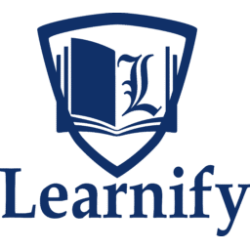The Evolution of Safety Standards Training Course
Introduction
Safety standards have continually evolved to address emerging risks, technological advancements, and societal expectations. This training course provides a comprehensive understanding of the historical development, current frameworks, and future directions of safety standards. Participants will explore the drivers of change, key regulatory milestones, and innovative approaches to achieving safety excellence in the workplace.
Course Objectives
By the end of this course, participants will:
- Gain insights into the historical evolution of safety standards across industries.
- Understand the role of international organizations and frameworks in shaping safety regulations.
- Explore technological advancements influencing the future of safety standards.
- Develop strategies for implementing and maintaining compliance with safety standards.
- Analyze global trends and emerging challenges in safety regulations.
- Strengthen their organization’s resilience and adaptability to evolving safety requirements.
Who Should Attend?
This course is ideal for:
- HSE professionals and managers
- Compliance officers and regulatory specialists
- Safety engineers and risk management professionals
- Corporate leaders and decision-makers
- Industry professionals in construction, manufacturing, healthcare, energy, and transportation
- Academics and researchers in occupational health and safety
- Policy-makers and regulatory bodies
Advanced 5-Day Course Outline
Day 1: Foundations of Safety Standards
Session 1: The History of Safety Standards
- Key milestones in the development of workplace safety regulations
- Evolution from reactive measures to proactive safety cultures
Session 2: Principles of Modern Safety Standards
- The hierarchy of controls and risk management frameworks
- Case studies: Benchmarking successful implementation of safety standards
Session 3: The Role of International Organizations
- Influence of ISO, OSHA, ILO, and regional safety bodies
- Practical session: Mapping relevant standards to participants’ industries
Day 2: Understanding and Implementing Current Standards
Session 1: Key Global Safety Frameworks
- Overview of ISO 45001, ANSI, NFPA, and other critical standards
- Practical session: Conducting a compliance gap analysis
Session 2: Industry-Specific Safety Standards
- Tailored approaches for construction, energy, healthcare, and manufacturing
- Group activity: Identifying sector-specific safety requirements
Session 3: Integrating Safety Standards into Management Systems
- Strategies for embedding safety standards into organizational policies
- Case studies: Integrating ISO standards into daily operations
Day 3: Technology and Innovation in Safety Standards
Session 1: Digital Tools for Safety Management
- Exploring AI, IoT, and data analytics in enhancing compliance
- Practical session: Evaluating safety management software
Session 2: Emerging Technologies and Their Impact
- Augmented reality (AR) for training, wearable tech, and automation
- Case studies: Innovations transforming workplace safety
Session 3: Cybersecurity and Safety Standards
- Addressing the intersection of physical safety and digital security
- Practical session: Developing a safety and cybersecurity integration plan
Day 4: Challenges and Global Trends in Safety Standards
Session 1: Adapting to Emerging Risks
- Managing challenges such as pandemics, climate change, and automation
- Group discussion: Preparing for dynamic workplace risks
Session 2: Sustainability and Safety Standards
- Aligning safety protocols with ESG (Environmental, Social, Governance) goals
- Practical session: Designing sustainable safety practices
Session 3: Addressing Cross-Border Compliance
- Navigating international regulations for multinational operations
- Case studies: Managing compliance in diverse regulatory environments
Day 5: Future Directions and Strategic Planning
Session 1: The Future of Safety Standards
- Predicting trends: Adaptive standards, AI-driven updates, and global harmonization
- Group discussion: Implications of future trends on industries
Session 2: Building Resilient Safety Cultures
- Moving beyond compliance to proactive safety innovation
- Practical session: Developing a roadmap for continuous improvement
Session 3: Strategic Partnerships and Collaboration
- Engaging stakeholders, industry associations, and regulatory bodies
- Group activity: Crafting a collaborative safety enhancement initiative
Conclusion and Next Steps
- Certification of completion
- Access to tools and templates for compliance management and strategic planning
- Networking opportunities with safety professionals and experts

